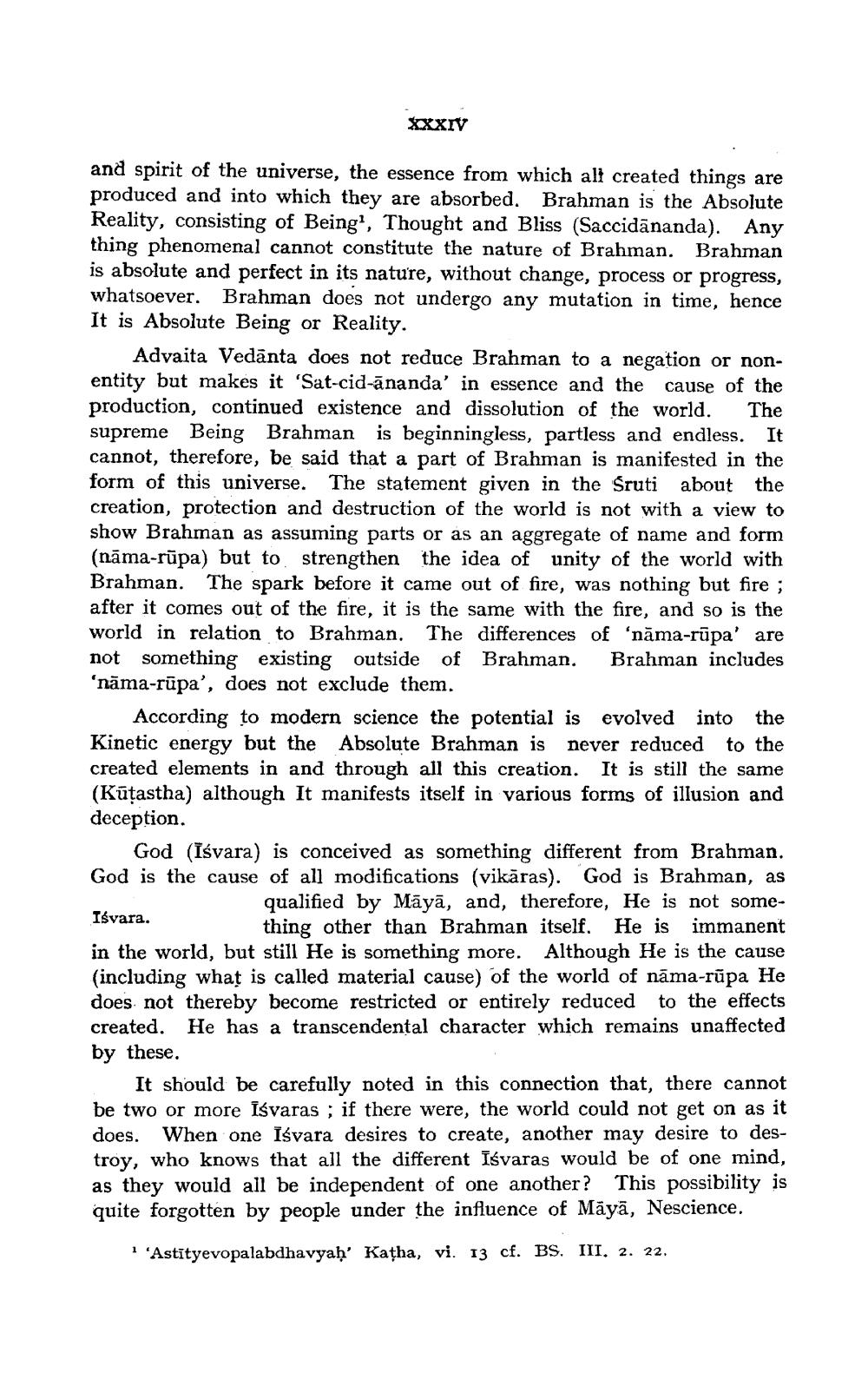________________
XXXIV
and spirit of the universe, the essence from which all created things are produced and into which they are absorbed. Brahman is the Absolute Reality, consisting of Being', Thought and Bliss (Saccidānanda). Any thing phenomenal cannot constitute the nature of Brahman. Brahman is absolute and perfect in its nature, without change, process or progress, whatsoever. Brahman does not undergo any mutation in time, hence It is Absolute Being or Reality.
Advaita Vedānta does not reduce Brahman to a negation or nonentity but makes it 'Sat-cid-ānanda' in essence and the cause of the production, continued existence and dissolution of the world. The supreme Being Brahman is beginningless, partless and endless. It cannot, therefore, be said that a part of Brahman is manifested in the form of this universe. The statement given in the Sruti about the creation, protection and destruction of the world is not with a view to show Brahman as assuming parts or as an aggregate of name and form (nāma-rūpa) but to strengthen the idea of unity of the world with Brahman. The spark before it came out of fire, was nothing but fire ; after it comes out of the fire, it is the same with the fire, and so is the world in relation to Brahman. The differences of 'nāma-rūpa' are not something existing outside of Brahman. Brahman includes 'nāma-rūpa', does not exclude them. According to modern science the potential is evolved into the
energy but the Absolute Brahman is never reduced to the created elements in and through all this creation. It is still the same (Kütastha) although It manifests itself in various forms of illusion and deception.
God (īśvara) is conceived as something different from Brahman. God is the cause of all modifications (vikāras). God is Brahman, as
qualified by Māyā, and, therefore, He is not someIsvara.
thing other than Brahman itself. He is immanent in the world, but still He is something more. Although He is the cause (including what is called material cause) of the world of nāma-rūpa He does not thereby become restricted or entirely reduced to the effects created. He has a transcendental character which remains unaffected by these.
It should be carefully noted in this connection that, there cannot be two or more īśvaras ; if there were, the world could not get on as it does. When one Isvara desires to create, another may desire to destroy, who knows that all the different Isvaras would be of one mind, as they would all be independent of one another? This possibility is quite forgotten by people under the influence of Māyā, Nescience.
1 'Astītyevopalabdhavyaḥ' Katha, vi. 13 cf. BS. III. 2. 22.




